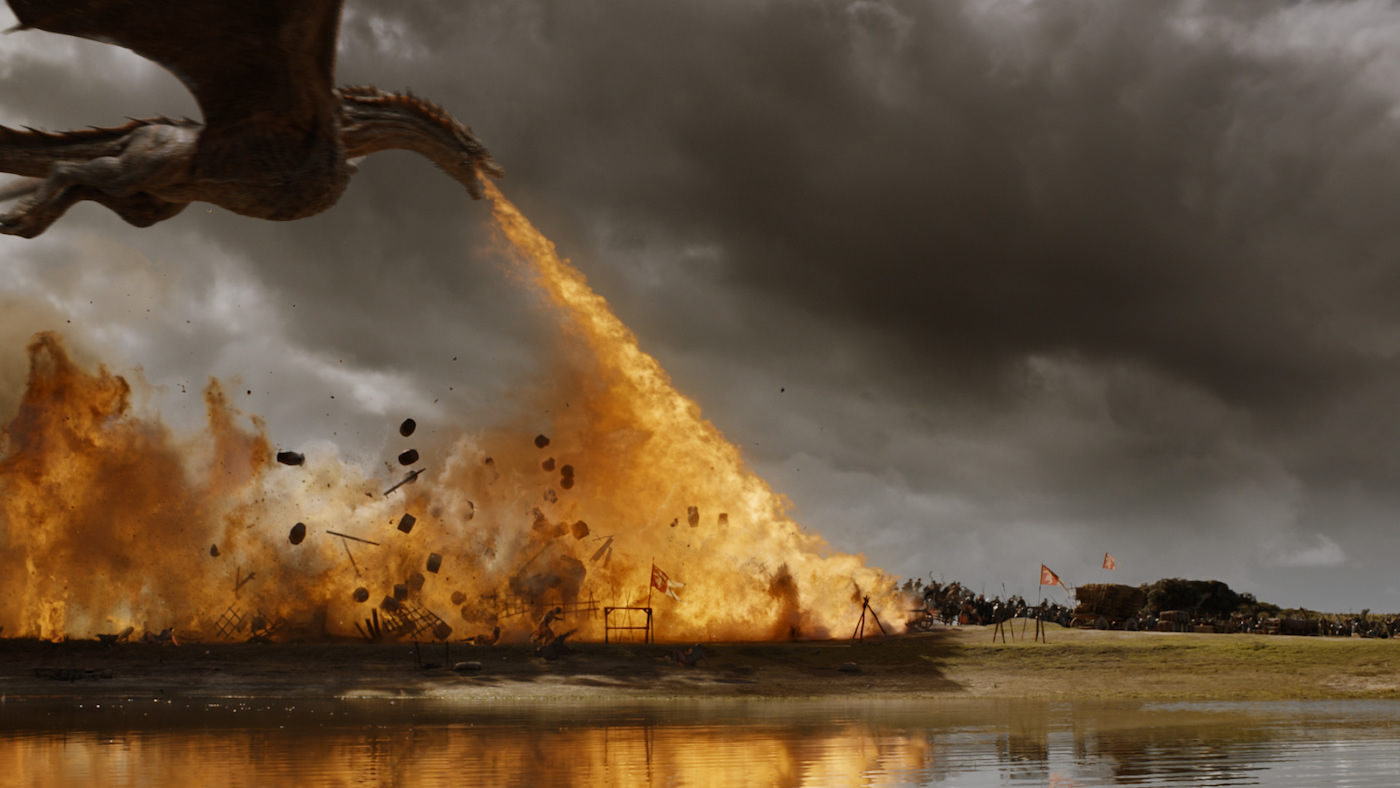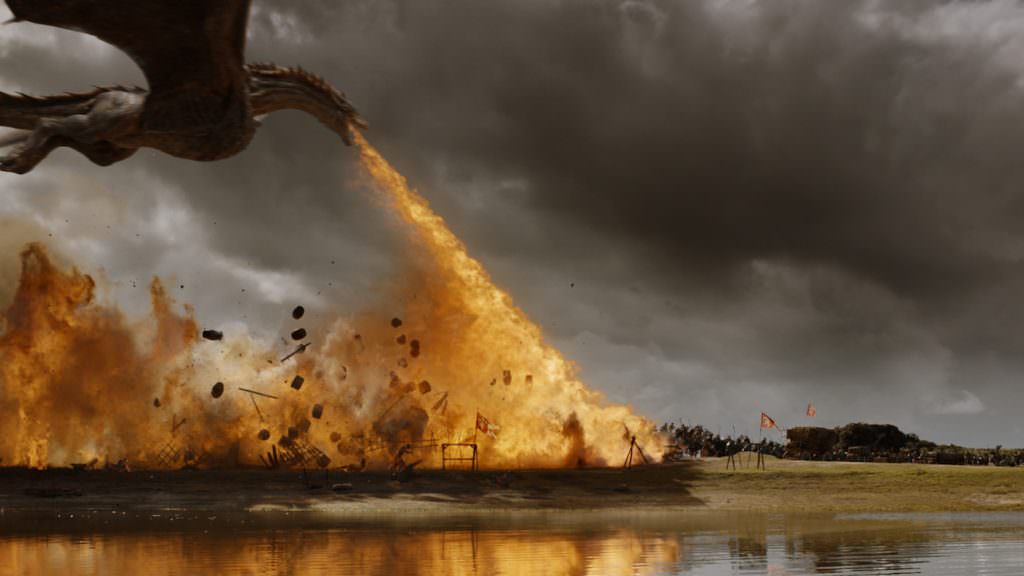We Talked to a Game of Thrones Loving Scientist About Dany’s Dragons
We’ve watched them grow before our eyes. Born unto fire, the dragons of Game of Thrones have remained at the center of the HBO series’s narrative over its seven-year run. And this Sunday’s finale will mean the beasts’s fans will have to say goodbye to their secret crushes, their CGI heartthrobs, until the 8th and final season returns in 2019.
Many will miss Daenerys’s fire-breathing reptiles, Drogon, Rhaegal and Viserion, acutely. Viserion, as you know, is no longer even a part of the Dany’s dragon trinity—the poor beast is now in the cold hands of the Night King. We’ve followed along from the moment they were given to her as eggs upon her wedding to Khal Drogo, through adolescence to adulthood.
We’ve soared with them when they first took wing. We waited with bated breath for them to return to their mother’s breast. We watched in awe while considering the complexity of their being—graceful and majestic creatures that were capable of extreme hegemonic violence. They always seemed aloof and yet loyal, the attributes that naturally endear us to them and leave us wanting more. We were heartbroken when one was brought down in battle with a spear.
Looking back now, though, we started wondering about just how accurate the depiction of these fantastic animals’ lives jibed with their natural inspirations. Was their growth rate, for instance, realistic compared to large, real reptiles? Would they really be able to fly?
So we turned to an expert and a GoT fan for some answers. Dr. Raul Diaz is a comparative embryologist and herpetologist at Southeastern Louisiana University who says, overall, the dragons’ visual effects creators did a good job of study nature to make them realistic.
“I’ve been thinking about this ever since the eggs showed up in the first season,” Diaz says. “I watch Game of Thrones religiously.”
Some of us may have thought the eggs hatching after being cooked in a fire to be a dramatic tool dreamed up by show writers. After all, such conditions usually lead to nothing more than hard-cooked eggs.
But Diaz says something like this event is normally seen in nature. Scientists call it diapause, a phenomenon where development halts until favorable environmental conditions restart it. It is seen most frequently in insects, but fish, reptiles and even some mammals go through it. Diaz points to one example he has studied—an Australian turtle that lays its eggs on river banks. Those eggs will remain dormant during dry conditions, only hatching when the river floods and immerses them in water.
Looking at their growth rate, doesn’t it seem that they developed quickly? Of course, the Game of Thrones chronology is well known to jump around in time. The show’s creator, R.R. Martin, has written that, “Some chapters cover a day, some only an hour; others might span a fortnight, a month, half a year.”
Still, even if we consider each season to take course over a year, Diaz says the dragons’ growth to adult size is consistent with their real-life brethren. “It’s all about feeding,” he says. “I work a lot with reticulating pythons. When they hatch, they’re a foot long and eat a small mouse. In a year, they can grow to 11 feet long and eat large rabbits.”
The dragons’ growth rate likely falls somewhere between those of real-life komodo dragons, which reach adult size and sexual maturity in five to seven years, and saltwater crocodiles, which can take 12 to 15 years to reach 23 feet long and 2,600 pounds.
He notes that these dragons are owned by Daenerys, a queen who could offer them as many goats as they would want to eat. Plus, the adolescent dragons are seen honing their hunting skills on ample supplies of goats and other large animals on the Westeros countryside.
“Five or six years is enough time to grow big if it’s genetically programmed to grow big and it has the nutrients it needs to grow,” he says.
Indeed, the Game of Thrones dragons would need to take in plenty of calories. In fact, activities like flying, active foraging and fire-breathing would consume huge amounts of energy, so they’d need to feed regularly.
Even with an abundance of calories available, he’s not too sure about that whole flying thing.
Animal flight involves a series of evolutionary tradeoffs. A bird’s bones, for instance, have become hollow and contain numerous struts to be lightweight and strong. They have even lost their teeth as adaptations to drop weight and optimize flight. But the dragons are a bit like flying elephants, replete with armor scales and rows of sharp teeth. “The weight of these dragons—I don’t know if their bones would be able to support them or their muscles are developed enough to sustain flight,” Diaz says.
Fire breathing, on the other hand, isn’t that far of a stretch. Animals have developed all kinds of weapons in the constant arms race that is survival. Take the spitting cobra, which can shoot venom a good distance from its fangs to defend itself. Or the bombardier beetle, which mixes chemicals in a chamber at its rear end to violently eject a stream of corrosive, nearly boiling chemicals that can kill attackers.


Drogon in action, breathing fire from his throat. Courtesy HBO.
“If you watch the dragons when they exhale fire, it is coming from their throats, not their mouths, so they are truly fire-breathing,” he says. “The reaction must happen in their tracheas or chemical sacs around their lungs.”
Of course, the accuracy of the animators’ work on the dragons is just one reason why Diaz plans to be in front of his TV this Sunday. “I have always had a fascination with monsters and fantasy,” he says. “That’s why I’m a diehard Game of Thrones fan.”
Featured image: Courtesy of HBO




